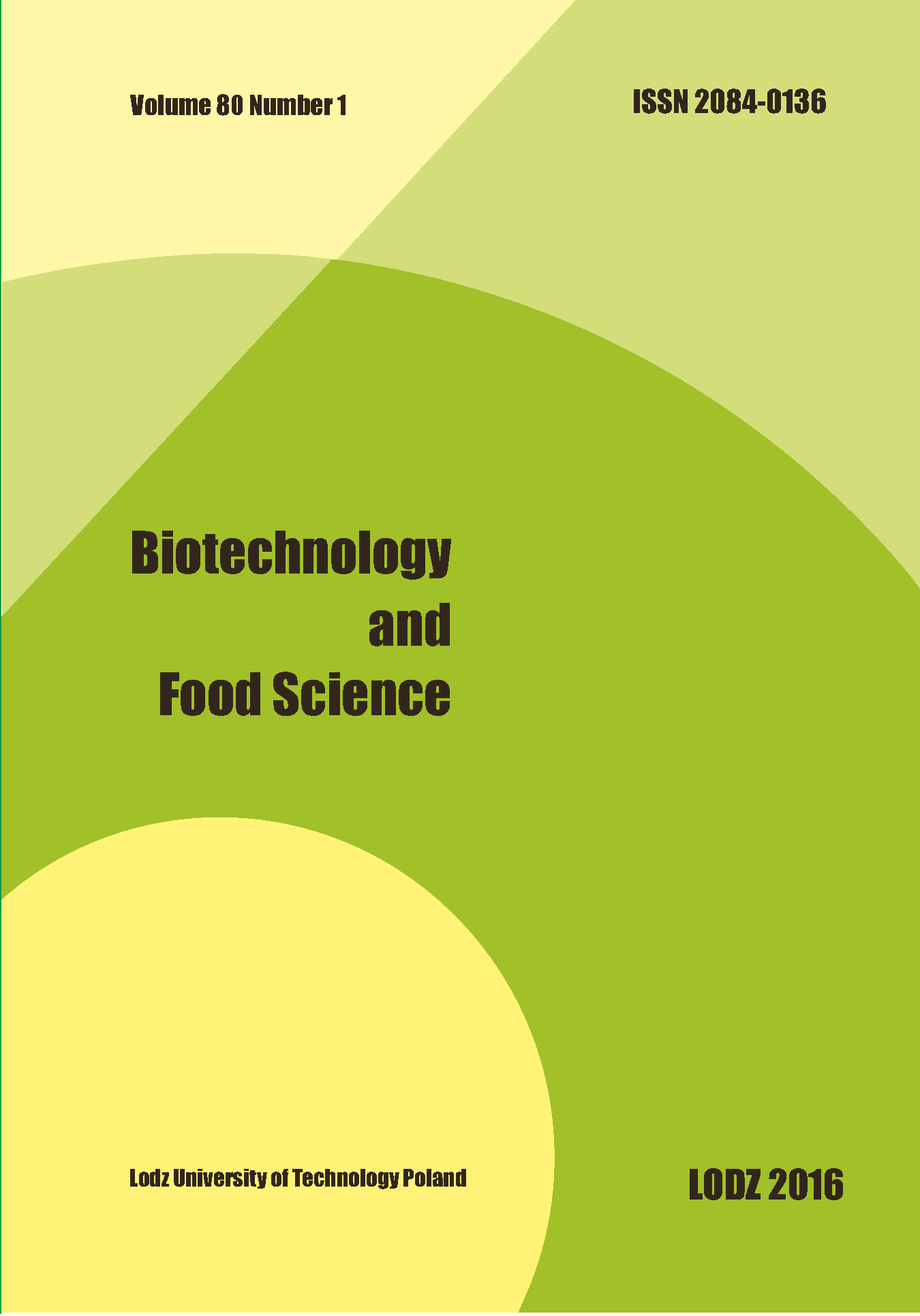Abstract
Regardless the form, nickel is an element commonly used. Its numerous advantages make it irreplaceable in many industries. The widespread use of this element in different branches leads to increasing nickel penetration to the environment and its pollution. Furthermore, the contamination of environment results in affecting the living organisms, including both plants that are directly exposed to Ni in soil, water or air, and humans whose exposition to Ni is direct (e.g. contaminated air) and/or indirect (e.g. food with high amount of Ni). Therefore, the exposition of living organisms to Ni may constitute a threat. This paper constitutes the short review of nickel as an environmental contaminant with characterization of its main sources in the environment. The nickel nanoparticles have been also studied. The influence of Ni and its nanoparticles on living organisms with emphasizing its allergenicity of human has been described.
References
Barceloux DG, Barceloux D. Nickel. J Toxicol Clin Toxicol 1999, 37:239-258.
Kabata-Pendias A, Pendias H. Biogeochemia pierwiastków śladowych. Wyd. Naukowe PWN, Warszawa 1999, 353-354.
Śpiewak R, Piętowska J. Nikiel - alergen wyjątkowy. Od struktury atomu do regulacji prawnych. Alergol Immun 2006, 3:58-62.
Bielański A, Podstawy chemii nieorganicznej II. Wyd. Naukowe PWN, Warszawa 2002, pp 938-940.
Warner JS, Sunderman FW Jr. Occupational exposure to airborne nickel in producing and using primary nickel products, Nickel in the Human Environment. Lyon: International Agency for Research in Cancer, 1984, 419-437.
Gawk Rodger DJ, Lewis FM, Sham M. Contact sensitivity to nickel and other metals in jewelry reactors. J Am Acad Dermatol 2000, 43:31-36.
Cempel M, Nikel G. Nickel: A Review of its Sources and Environmental Toxicology. Polish J of Environ Stud 2006, 15:375-382.
Davis JR. Special-Purpose Nickel Alloys, ASM Specialty Handbook: Nickel, Cobalt, and Their Alloys 2000, 106-123.
Parkinson R. Properties and applications of electroless nickel. Nickel Development Institute, 1-33. https://nickelinstitute.org/~/Media/Files/TechnicalLiterature/Propertiesandapplications ofelectrolessnickel_10081_.pdf; entry 20.06.2016.
Łebkowska M, Załęska-Radziwiłł M. Występowanie i ekotoksyczność nanocząstek. Ochr Śr 2011, 4:23-26.
Bystrzejewska-Pitrowska G, Golimowski J, Urban PL. Nanoparticles: their potential toxicity, waste and enviromental management. Waste Manage 2009, 29:2587-2595.
Gong N, Shao K, Feng W, Lin Z, Liang C, Sun Y. Biotoxicity of nickel oxide nanoparticles and bio-remediation by microalgae Chlorella vulgaris. Chemosphere 2011, 83:510-516.
Cempel M, Nikel G. Nickel: a review of its sources and environmental toxicology. Polish J of Environ Stud 2006, 15:375-382. Nickel – the use and influence on living organisms Biotechnol Food Sci, 2016, 80 (1), 44-52 http://www.bfs.p.lodz.pl 51
Jośko I, Oleszczuk P, Futa B. The effect of inorganic nanoparticles (ZnO, Cr2O3, CuO and Ni) and their bulk counterparts on enzyme activities in different soils. Geoderma 2014, 232-234:528-237.
Uruc Parlak K. Effect of nickel on growth and biochemical characteristics of wheat (Triticum aestivum L.) seedlings. NJAS-Wageningen J Life Sci 2016, 76:1-5.
Jarosławiecka A., Piotrowska-Geget Z., Mechanizmy oporności na metale ciężkie u mikroorganizmów. 2006, 231-238.
Cheng T, Li H, Xia W, Jin L, Sun H. Exploration into the nickel “microcosmos” in procariotes. Coordin Chem Rev 2016, 311:24-37.
Sydor AM, Zamble DB. Nickel Metallomics: General Themes Guiding Nickel Homeostasis, Metallomics and the Cell 2013, 375-416.
Boros E, Wyszkowska J, Kucharski J. Wpływ niklu na wzrost drobnoustrojów na podłożach stałych, J Elementol 2007, 12:167-180.
Ragsdale SW, Wood HG, Morton TA, Ljungdahl LG, DerVartanian DV. Nickel in CO dehydrogenase. The bioinorganic chemistry of nickel. VCH Publishers, New York 1988, 311-332.
Brown PH, Welch RM, Cary EE. Nickel: A micronutrient essential for higher plants. Plant Physiol 1987, 85:801-803.
Karaś Z, Barałkiewicz D. Chrom, nikiel i kobalt w ekosystemie żywieniowym sojusznicy czy wrogowie? PTTŻ - Oddział Wielkopolski, Poznań 2000, 35-124.
Shanying He, Zhenli He, Xiaoe Yangz, Virupax CB. Mechanisms of Nickel Uptake and Hyperaccumulation by Plants and Implications for Soil Remediation. Adv Agron 2012, 117:117-189.
Snigh A, Prasad SM. A lucrative techniqe to reduce Ni toxicity in Raphanus sativus plant by phosphate amendment: Special reference to plant metabolism. Ecotox Environ Safe 2015, 119:81-89.
Molas J. Changes in chloroplast ultrastructure and total chlorophyll concentration in cabbage leaves caused by excess of organic Ni (II) complex. Environ Exp Bot 2002, 47:115-126.
Boominathan R, Doran PM. Ni-induced oxidative stress in roots of the Ni hyperaccumulator, Alyssum bertolonii. New Phytol 2002, 156:205-215. 27. Gajewska E, Skłodowska M, Słaba M, Mazur J. Effect of nickel on antioxidative enzyme activities, proline and chlorophyll contents in wheat shoots. Biol Plantarium 2006, 50:653-659.
Arruda SCC, Silva ALD, Galazzi RM, Azevedo RAA, Arruda MAZ. Nanopatricles applied to plant science: A review. Talanta 2015, 131:693-705.
WHO/SDE/WSH/05.08/55.
Seńczuk W. praca zbiorowa, Toksykologia współczesna. Wyd. Lekarskie PZWL, Warszawa 2005, 412- 417.
Scientific Committee on Food, Tolerable upper intake levels for vitamins and minerals. EFSA 2006, 345-357.
European Food Safety Authority (EFSA), Scientific Opinion on the risks to public health related to the presence of nickel in food and drinking water. EFSA Journal 2015, 13:1-202.
Das KK, Das SN, Dhundasi SA. Nickel its adverse effects and oxidative stress. Indian J Med Res 2008, 128:412-425. Mielcarz and Smolińska Biotechnol Food Sci, 2016, 80 (1), 43-52 http://www.bfs.p.lodz.pl 52
Reichrtova E, Takac L, Sulicowa L, Foltinova J. Biological monitoring of airborn metal particles originated from nickel refinery dump. Hazardous waste: detection, control, treatment, 1988, 931-936.
Kasprzek KS, Sunderman NFW, Salnikow K. Nickel carcinogenesis. Mutat Res 2003, 533:67-97.
Maqsood AS, Maqusood A, Javed A, Javed M, Abdulaziz A Al-Khedhairy, Salman A Alrokayan. Nickel oxide nanoparticles induce cytotoxicity, oxidative stress and apoptosis in cultured human cells that is abrogated by the dietary antioxidant curcumin. Food Chem Toxicol 2012, 50:641-647.
Śpiewak R, Brewczyński PZ. Powikłania po stabilizacji płytą metalową złamania kości udowej u chorej z alergią kontaktową na chrom nikiel i kobalt. Pol Tyg Lek 1993, 48:651-652.
Rahilly G, Price N. Nickel allergy and orthodontics. J Orthod 2003, 30:171-174.
Duran A, Tuzen M, Soylak M. Trace metal contents in chewing gum and Candy samples marketed in Turkey. Environ Monit Assess 2009, 149:283-289.
Ščanča J, Zuliani T, Milačič R. Study of nickel content in Ni-rich food products in Slovenia. J. Food Compos Anal 2013, 32:83-89.

